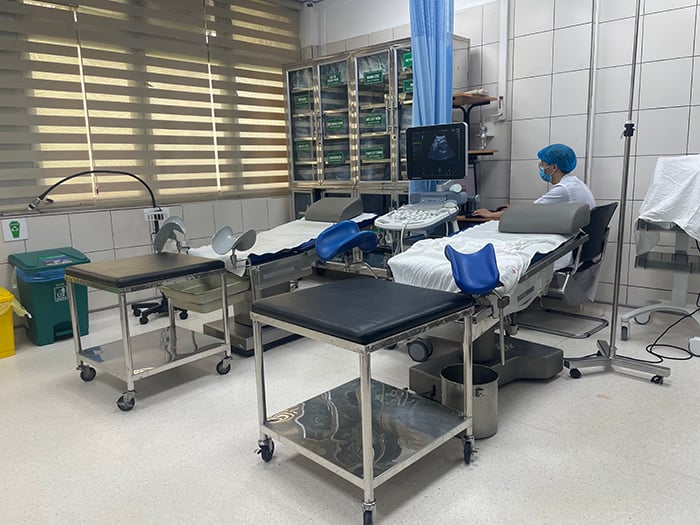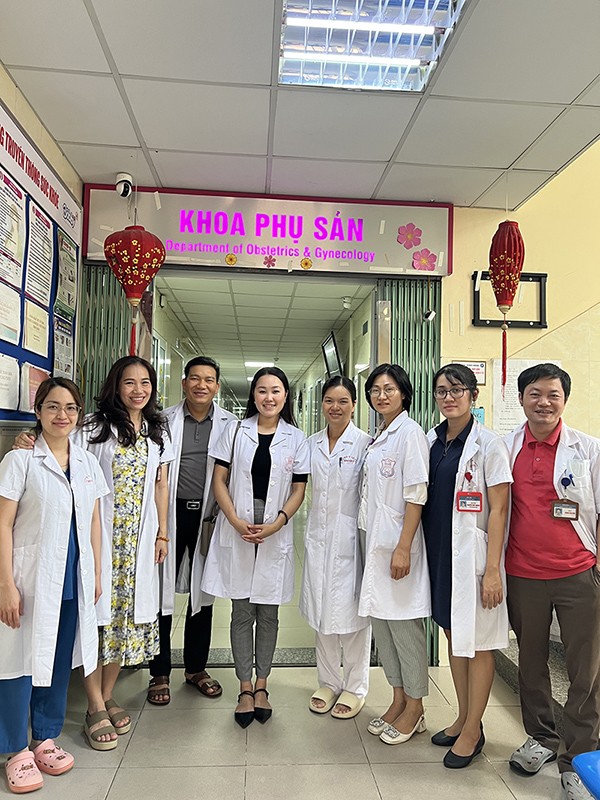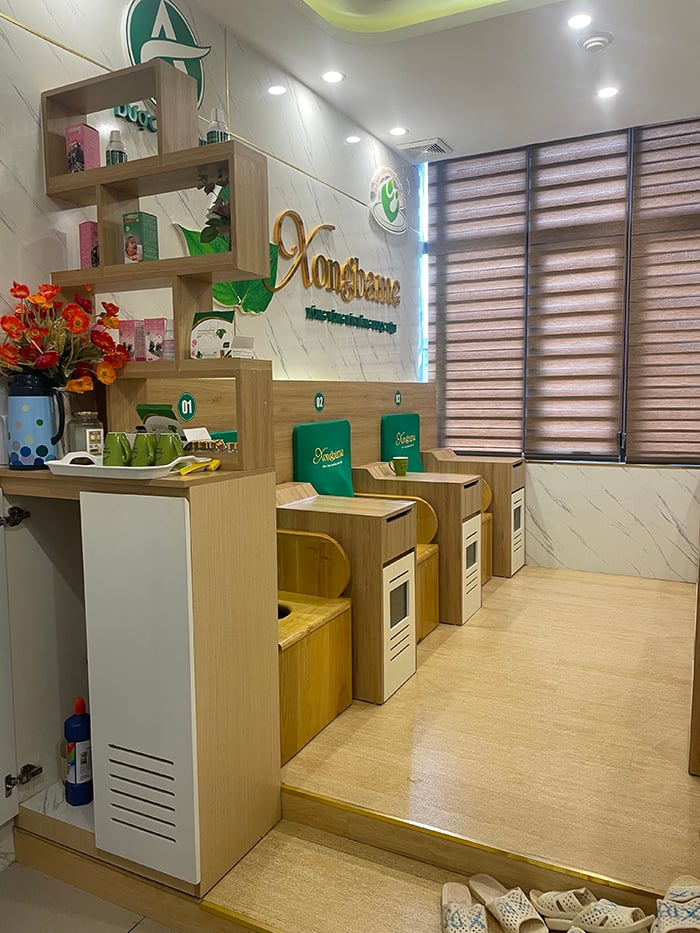In early 2023, I was introduced to the Hoc Mai Australia-Vietnam Medical Foundation. The Hoc Mai Foundation is a not-for-profit foundation established in 2001 by Australian Professor Emeritus Kerry Goulston and now continues under the guidance of Associate Professor Christopher Pokorny. Since its beginnings, the Hoc Mai Foundation has aimed to bring healthcare professionals in Australia and Vietnam together in an educational partnership to improve health outcomes through education and research in Vietnam. Every year, several programs including international student exchange programs and teaching workshops are held. As the first-generation daughter of two immigrants who fled Vietnam by boat and came to Australia as refugees building their lives from the bottom up, I felt aligned with this foundation’s values and goals and jumped at the opportunity to be involved.
In September 2023, a group of 20 individuals with the Hoc Mai Foundation, including myself, embarked on a trip to Hanoi, Vietnam, for the medical and nursing teaching program. Specifically, within the Obstetrics and Gynaecology (O&G) program, I had the opportunity to visit and be involved with the O&G department at E Hospital and the Hanoi Obstetrics and Gynaecology Hospital, along with Obstetrician Gynaecologist Dr Quang Phu Ho and midwife Carol Cooke (Figure 1). It was an incredible experience to see first-hand how obstetrics and gynaecology was done in Vietnam, a developing country that is in fact developing at an astonishingly quick pace with an impressive standard of patient care. Detailed below are the routine antenatal, intrapartum and postnatal cares provided at the Hanoi Obstetrics and Gynaecology Hospital.
- Figure 1: Dr Kimberly Nguyen with the O&G department at E Hospital
- Figure 2: Room for perineal steaming.
Labour rooms
Women in labour are first reviewed by a doctor in a designated assessment room equipped with a bed and ultrasound machine. Their antenatal details are reviewed electronically. Prior to this, low-risk women would have been seen three times in their pregnancy by a doctor – once in each trimester – or more often depending on any antenatal complications they have. Those in early labour are moved to the ‘Early Labour’ room and allowed to progress through labour alongside other labouring women, and fetal wellbeing is assessed with intermittent auscultation. Once in the active stage of labour, women then proceed to the delivery room (Figure 2), with up to four beds in one room separated by a curtain, and CTG monitoring is commenced. The delivery room is abuzz with energy, with the midwives and obstetric and anaesthetic doctors working efficiently and attending to the needs of the labouring women. The women tended to be exceptionally stoic, delivering babies with coached pushing, minimal analgesia (although epidural analgesia is readily available) and a routine episiotomy was performed for all primiparous women.
Operating theatres
In this particular department at the Hanoi Obstetrics & Gynaecology Hospital, there are 40–50 deliveries every day. The instrumental rate is effectively 0% with a caesarean section rate of 40%. This is comparable with the reported caesarean rate of 43%¹ across urban Vietnam. Interestingly, a recent qualitative study¹ on Vietnamese mothers and healthcare professionals attributed the increasing caesarean rate to patient fear of vaginal birth (eg labour pain, episiotomy, negative previous experiences) and clinician fear of the unpredictable complexity of the labour course and litigation in the face of intrapartum complications.
The operating theatres are always busy with up to three caesarean sections occurring simultaneously in an individual theatre and women efficiently being wheeled in and out as one caesarean ended and another one started. On one particular day, it appeared significantly busier – according to the staff it was a highly desirable day of the Lunar Calendar and evidently many women had opted for their baby to be born on this day!
In one notable case, a primiparous woman was brought to the operating theatre for a caesarean section at 32 weeks gestation. Unfortunately she had ruptured her membranes at 18 weeks gestation and had received fortnightly transabdominal amnioinfusions up to this point and was closely monitored throughout her pregnancy. The emotions of the patient and the operating room staff was palpable as her live baby boy was delivered in good condition, especially considering her history of pregnancy loss and subfertility.
Postnatal
Following vaginal delivery, all women are monitored in one room for the first 6 hours. A handful of midwives manage this room where they have eyes on all the immediate postpartum women and thus any deteriorating patient is easily identified. Postnatally, women are provided with several services including a hair washing service and massage therapy for mum (and baby!). Skin-to-skin contact is highly encouraged with dedicated ‘kangaroo rooms’ – a quiet space for mothers and partners to breastfeed and bond with their baby. Perineal care routinely involves laser therapy and perineal steaming (Figure 3) with a blend of essential oils to soothe pain and promote wound healing. Women tended to stay for 1–2 days following vaginal delivery before being discharged home.

Figure 3: The Delivery Room
Final thoughts
‘Hoc Mai’ means ‘forever learning’ in Vietnamese. The Hoc Mai Foundation is based on the concept of mutual learning, rather than the idea of developed countries educating colleagues in developing countries. I truly believe that this is the case from my recent trip to Hanoi – it was incredibly rewarding to witness how the Vietnamese healthcare system works to accommodate the incredibly high patient load while providing holistic care to women.
References
- Takegata M, Smith C, Nguyen HAT, et al. Reasons for increased caesarean section rate in Vietnam: a qualitative study among Vietnamese mothers and health care professionals. Healthcare 2020;8(1):41. doi:10.3390/healthcare8010041







Leave a Reply